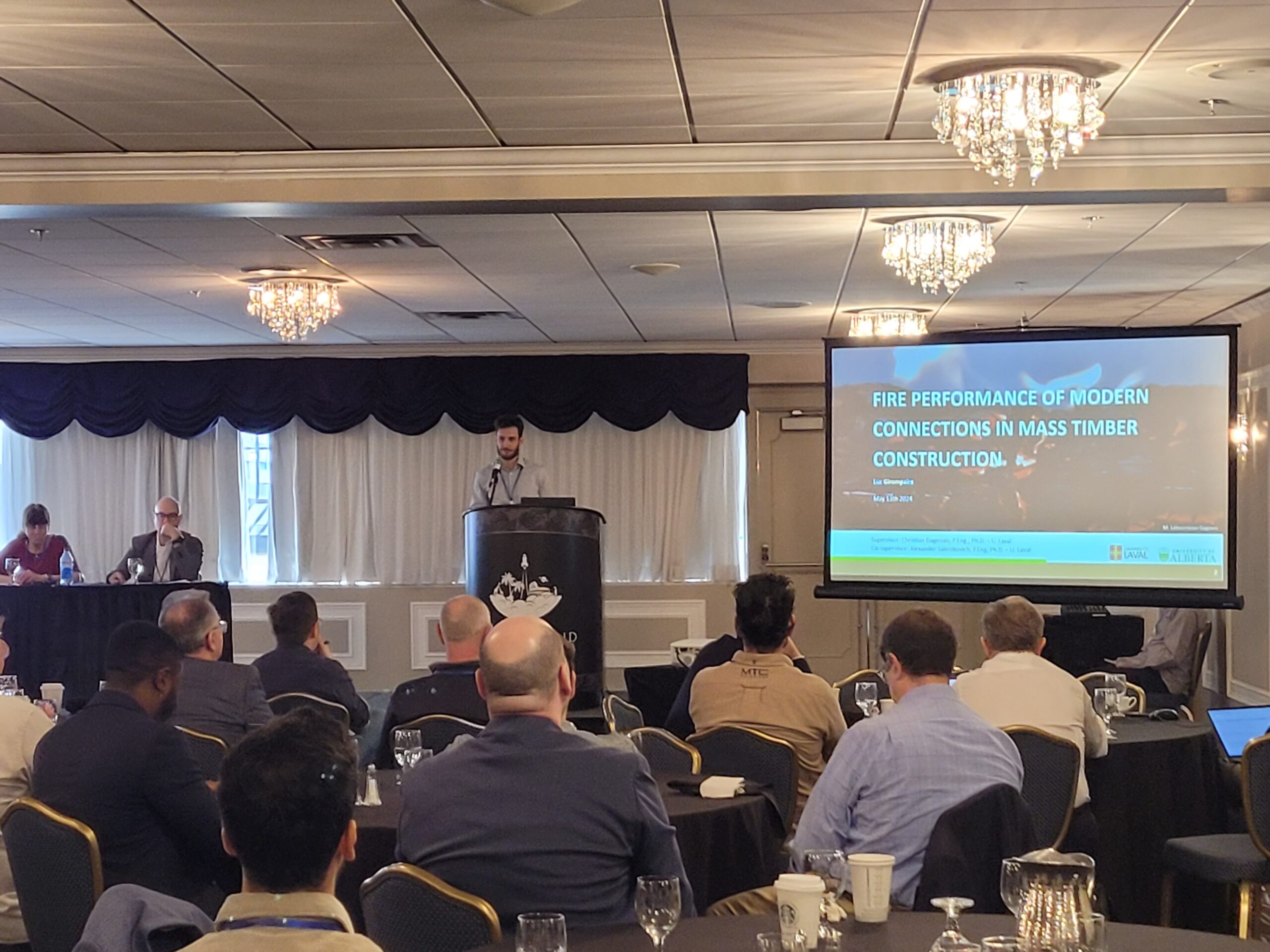Participation of Luc Girompaire at the «NextGen Wood Conference 2024»!
Luc Girompaire, PhD student in wood and bio-based materials engineering under the supervision of Christian Dagenais and Alexander Salenikovich, had the opportunity to participate in the «NextGen Wood Conference 2024», held May 13-14, 2024 in Edmonton (AB, Canada). This international conference brings together experts in the field to discuss advances and challenges in the use of wood in construction.
At this event, Luc presented his innovative research on the «Fire performance of modern connections in mass timber construction». His work focuses on improving the fire safety of mass timber construction, a crucial area given the increasing use of this environmentally-friendly material in sustainable construction.
This opportunity enabled Luc to share his discoveries and scientific advances with an international audience of researchers, engineers and industry professionals. Through his oral presentation, Luc was able not only to disseminate his research results, but also to receive constructive feedback from his peers. He also strengthened his skills and broadened his professional network.
The CRMR’s student mobility program provided crucial financial support, making this enriching experience possible. Thanks to this assistance, Luc was able to represent his institution and actively contribute to the advancement of research in his field.
Congratulations to Luc on this achievement, and we wish him every success in his academic and professional career!

Titre of presentation : Fire performance of modern connections in mass timber construction
Abstract:
Over the last years, mass timber building height and associated fire safety concerns have increased. For these tall buildings, the National Building Code of Canada 2020 prescribes a fire-resistance rating (FRR) of at least 2 hours for the structural elements based on the results of tests following CAN/ULC-S101. The CSA O86 wood design standard proposes a fire design method for large cross-section wood elements and stipulates that the connections must have at least the same FRR as the elements they support. Modern connections, such as concealed beam hangers, glued-in rods, etc. are mostly embedded in the timber elements and therefore are expected to perform well during a fire.
The primary objectives of this project are to characterize the fire performance of modern connections in mass timber construction and to propose design guidelines and recommendations. As the project recently started, this presentation will only provide a general overview of the state of the art.
At first, the review of various fire design methods for connections exhibits limitations, especially concerning prolonged fire exposure scenarios. The literature review highlights the necessity for further testing to characterize the fire performance of modern connections, as recent fire performance tests have predominantly focused on traditional connections with bolts and dowels.
By addressing these challenges and knowledge gaps, this research aims to advance the understanding and implementation of fire-safe practices in tall mass timber construction, contributing to the evolution of regulatory documentation and industry best practices.

